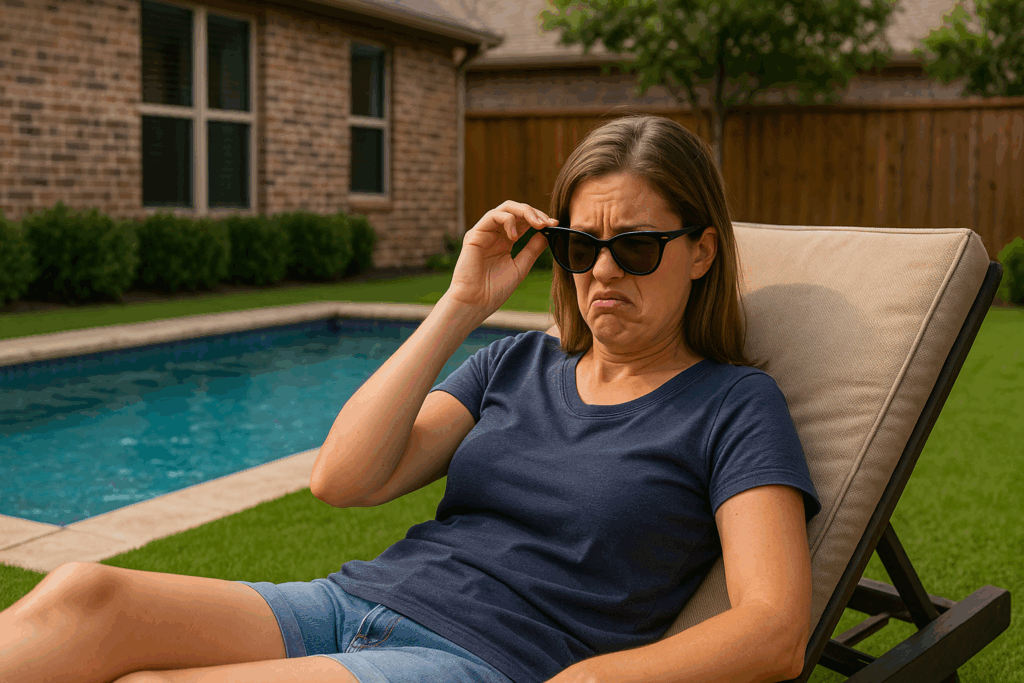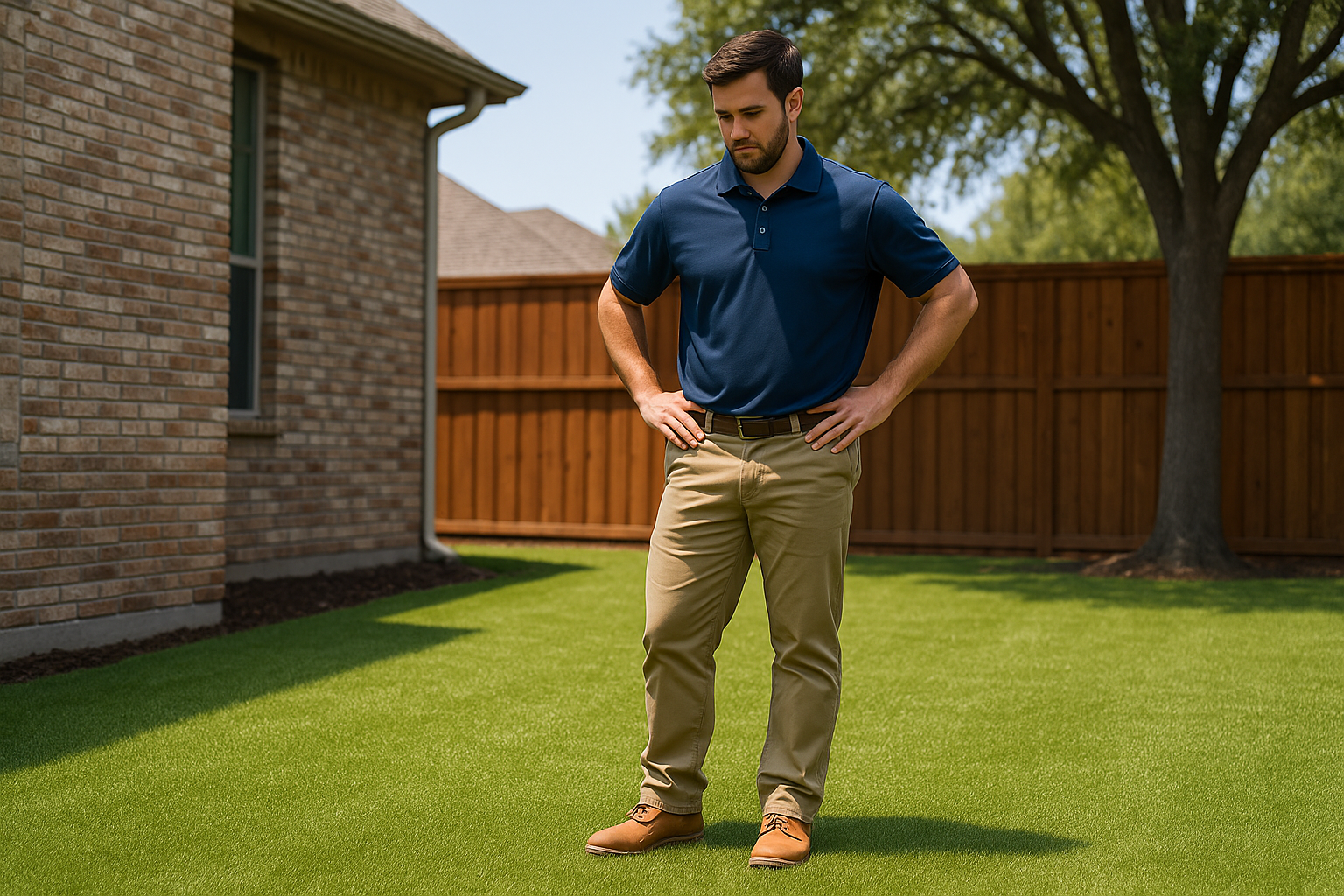Artificial grass is designed to look great and stay green all year long, but when it starts to smell bad, it can quickly go from convenient to unpleasant. If you’ve been asking yourself, “Why does my artificial grass smell so bad?”—you’re not alone. Odor issues are one of the most common complaints from turf owners, especially pet owners or those living in hot, humid areas like Dallas-Fort Worth.
The good news? Turf odor removal is easier than you might think. In this guide, we’ll walk through the most common causes of turf odors and give you fast, effective ways to fix the problem and keep your artificial lawn smelling fresh.
Why Does Artificial Grass Smell Bad?
There are a few main reasons artificial turf can develop a bad smell:
1. Pet Urine Build-Up
The most common source of turf odor is dog urine. While artificial grass has drainage, it doesn’t absorb liquids the way natural grass does. When pets urinate in the same spots repeatedly, the urine seeps into the infill and backing, where bacteria build up and create strong smells.
2. Bacteria and Mold Growth
Without regular cleaning, moisture and organic matter (like food scraps, leaves, or pet waste) can create a breeding ground for bacteria and even mold, especially in shaded or poorly drained areas.
3. Poor Drainage
If your turf wasn’t installed with proper sub-base and drainage systems, water and urine can collect under the surface and cause smells to linger.
4. High Heat and Sun Exposure
Hot temperatures, like those in Texas summers, can activate and intensify odors trapped in turf backing and infill, making the smell worse.
How to Remove Turf Odors Quickly and Effectively
Here are some proven steps for getting rid of turf smells fast:
Step 1: Remove Solid Waste
Pick up any visible pet waste promptly. The longer it sits, the worse the smell.
Step 2: Rinse with Water
Use a garden hose to rinse the turf thoroughly. Focus on the areas where pets usually go. This helps dilute urine and remove surface debris.
Step 3: Apply an Enzyme-Based Turf Cleaner
Enzyme cleaners break down the bacteria and proteins in pet waste that cause smells. Make sure to use a cleaner that is:
- Safe for pets
- Designed for synthetic turf
- Biodegradable
Recommended product: Simple Green Outdoor Odor Eliminator
Spray the cleaner evenly across the turf, let it sit for 10–20 minutes, then rinse thoroughly.
Step 4: Check and Replace Infill
Infill holds moisture and odors. If it smells or feels compacted, consider replacing it with a deodorizing infill like Zeolite, which absorbs ammonia and neutralizes odor naturally.
Step 5: Deep Clean Periodically
For long-term odor control, plan a deep clean every few months. This includes:
- Power brushing the turf to loosen debris
- Using a professional-grade turf disinfectant
- Inspecting and refreshing infill
Texas Turf Cleaning offers professional turf cleaning services across the Dallas-Fort Worth area, including deep odor removal.
Preventing Turf Odors in the Future
To keep your artificial grass smelling great:
- Rinse pet areas 2–3 times per week
- Clean up solid waste immediately
- Use an enzyme spray weekly during warmer months
- Ensure proper drainage under your turf
- Replace infill every 1–2 years if needed
When to Call the Professionals
If the smell won’t go away after DIY cleaning, or you notice:
- Persistent musty or urine odors
- Discoloration or slimy turf
- Dogs avoiding the area
It may be time for a professional turf cleaning. Contact Texas Turf Cleaning to schedule a service and restore your turf to a clean, odor-free state.
Final Thoughts
A smelly lawn doesn’t mean you have to give up on artificial grass. With the right products, regular maintenance, and help from professionals when needed, you can eliminate odors and enjoy a clean, fresh-smelling outdoor space.
For expert turf odor removal in Dallas-Fort Worth, reach out to us today for a fast and free quote.




